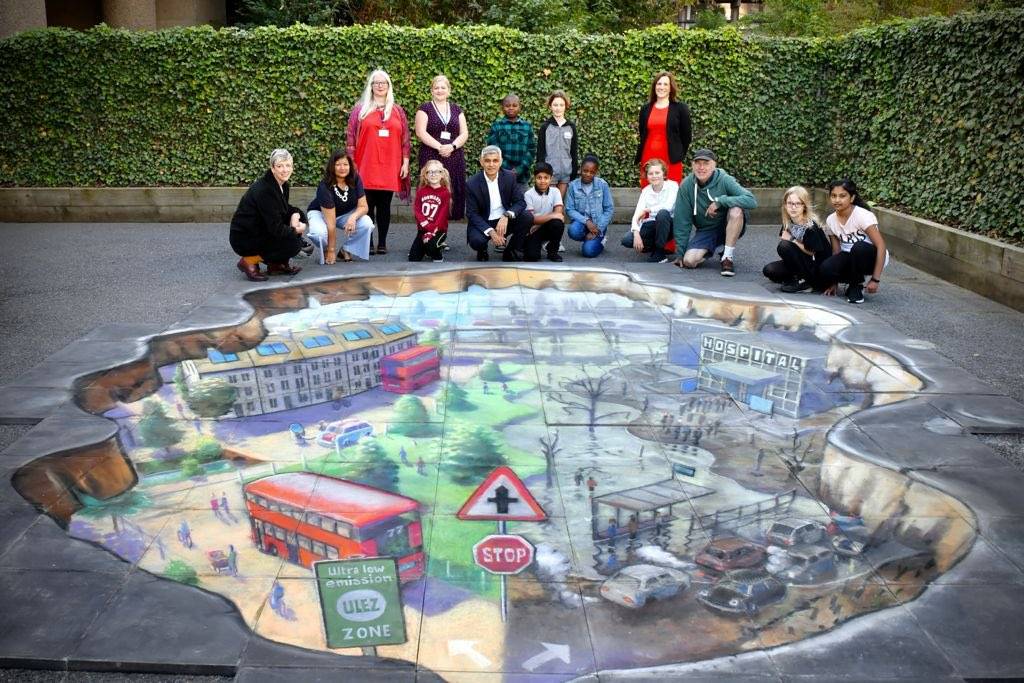The Mayor has launched a London-wide environment campaign to inspire all Londoners to take action on climate change, reports Asian Lite News
As UK is preparing for COP26 climate summit, the Mayor of London, Sadiq Khan, has warned time is running out to meet the goals of the Paris Agreement and to tackle the climate emergency before it’s too late.
During a keynote speech on Thursday, Sadiq spelt out why the climate emergency remains one of the biggest threats London and the world faces.
Average temperatures around the world, including in London, are already increasing. This summer, UK saw the impact of the climate emergency first-hand with soaring temperatures and flash floods in London.
Climate Vulnerability Mapping produced City Hall and Bloomberg Associates, Bloomberg Philanthropies’ pro-bono consultancy for cities, shows that six London boroughs are at particularly high risk from the effects of climate change, with most boroughs, particularly in inner London, showing at least some high risk.
The boroughs at particularly high risk, meaning that the risk of both flooding and overheating are very high, jeopardising lives and livelihoods are: Hackney, Hammersmith and Fulham, Islington, Brent, Tower Hamlets, and Newham.
City Hall analysis has identified that a quarter of London’s rail stations, and 10 per cent of London’s rail network, are at high risk of flooding in the future if extreme temperatures and flooding get worse.
Also 1 in 5 of our schools are either totally or partially at risk of flooding and nearly half of the hospitals.
It also found that there are over 200,000 existing homes and workplaces in London that are at either high or medium risk of surface water flooding alone.
A study led by University of Oxford, found that external air temperatures of 27 degrees and above ground will make it uncomfortably hot for passengers on the Tube network. In the worst case scenario, there would be 8 days (baseline period – 1961-1990) where external temperatures exceed 27 degrees, compared to up to 29 days by 2030 and 41 days by 2050.
In London, the Mayor had earler taken action through the introduction of the world’s first Ultra Low Emission Zone, which has helped reduce pollution in central London by nearly half at the same time as helping to reduce carbon emissions.
On 25 October, the zone will expand up to the north and south circular, taking in 3.8 million Londoners, and is expected to reduce road transport NOx emissions by around 30 per cent.
The Mayor on Thursday launched a London-wide environment campaign to inspire all Londoners – individuals, businesses and communities – to take action on climate change.
This started with an art installation by Julian Beever and supported by Bloomberg Philanthropies, at Prior Weston primary school symbolising the crossroads we currently face and that by making the right choices we can provide a greener, fairer future for younger generations.
“In the year of COP26, London is at a crossroads. We either take bold action now or face the consequences – with catastrophic impacts on our environment, the air we breathe and the climate,” Sadiq Khan said.
“I also want London to be a zero-pollution city so that no child has to grow up in our city breathing toxic air. That’s why I’m expanding the Ultra Low Emission Zone next month.”
Michael R. Bloomberg, founder of Bloomberg L.P. and Bloomberg Philanthropies and the UN Secretary-General’s Special Envoy for Climate Ambition and Solutions, said: “The latest data makes it clear that the global climate emergency requires bold local action.”
“At Bloomberg Philanthropies, we are glad to support the Mayor of London’s creative and promising efforts to capitalize on the power of data and art to increase support for public health and raise awareness of the urgent need to fight climate change.”
ALSO READ-JLF London brings fresh ideas in a virtual jamboree
READ MORE-Indian artistes, London Mozart Players to perform at ‘Peace and Harmony’ concert

Leave a Reply